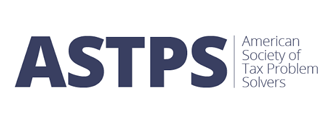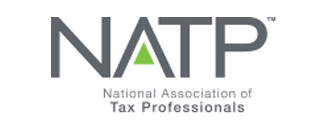Understanding Tax Penalties
November 20, 2023
November 20, 2023
How They Accumulate and Ways to Minimize Them
When filing your taxes, one misstep and you might find yourself facing tax penalties and interest that can quickly accumulate, adding strain to your financial situation. This article aims to demystify tax penalties, how they accumulate, and ways to minimize or avoid them.
One thing to note is that the IRS charges interest (currently at 8%!) on penalties, making these penalties on top of your original tax debt that much more costly.
To get out of this situation you need a qualified tax resolution expert on your side, fighting on your behalf and negotiating with the IRS. If you find yourself owing $10,000 or more to the IRS or state, reach out to our tax resolution firm for a free consultation
.
Let’s jump into the types of penalties the IRS can assess on top of your tax debt.
Common Tax Penalties
Failure-to-File and Failure-to-Pay Penalties often go hand in hand. Failing to file your tax returns on time or failing to pay your owed taxes can lead to these penalties. Among the two, the failure-to-file penalty is usually more severe, underscoring the necessity of filing your tax returns even if you are unable to pay the owed taxes immediately.
Accuracy-Related Penalties are triggered when there are discrepancies in the income reported or errors in the tax returns filed. This category includes negligence, substantial understatement of tax, and overvaluation of property claims. These penalties emphasize the importance of accurate and honest reporting.
When a check issued to the IRS bounces, a Penalty for Bad Checks or Electronic Payments is levied based on the amount of the check.
Employers are required to withhold and remit employment taxes to the IRS. Late Payment of Employment Taxes can result in penalties that escalate over time. Employers are required to pay these taxes in the right amount, on time, and in the right way. Failure to do so can be costly, starting at 2% but going as high as 15% depending on the timeline.
Self-employed individuals or those with other non-wage income are required to make estimated tax payments throughout the year. A Penalty for Underpayment of Estimated Tax may be assessed if these payments are not made or are insufficient.
The Accumulation of Penalties
Tax penalties can have a compounding effect over time. For instance, the failure-to-file penalty starts accruing from the day after the tax filing deadline and grows with each month the return remains unfiled, until the penalty reaches its maximum limit. The same mechanics apply to other penalties like the failure-to-pay penalty, which underscores the importance of addressing tax issues promptly to prevent an accumulation of penalties.
Strategies to Minimize or Eliminate Tax Penalties
Filing on time is a simple yet effective strategy to avoid the failure-to-file penalty. Even if you can't pay your taxes, filing on time can save you from one penalty.
Utilizing payment plans offered by the IRS can help manage tax debts in a structured manner, thereby avoiding the failure-to-pay penalty. These installment agreements allow taxpayers to pay their tax debts in manageable monthly installments.
If full payment is not possible, paying as much as you can by the due date can reduce the total penalties and interest accrued. This proactive step can also demonstrate good faith, which may be beneficial in negotiations with the IRS.
Engaging a tax relief professional can provide valuable insights into your tax situation, helping to make informed decisions that minimize penalties. Their expertise can be instrumental in navigating the complex tax landscape.
The IRS might provide penalty abatement for reasonable cause or under the first-time penalty abatement policy. It’s worthwhile to explore this option, and a tax professional can guide you on the eligibility criteria and the process involved.
Tax penalties can add a significant burden, but with a proactive approach and a solid understanding of tax regulations, they can be minimized or avoided. Engaging a tax relief professional can provide personalized advice and assistance, ensuring you remain compliant while minimizing your tax burden. Reach you to our firm for a consultation
.


October 1, 2025
It seems like natural disasters such as hurricanes, floods, earthquakes, wild fires, and tornados are happening all the time and just about everywhere. Climate change also seems to be making these disasters more deadly and more destructive. Many people do step up to help survivors with needed financial donations. The only thing worse than the disasters themselves are the scammers that exploit these situations for financial gain at the expense of hard working and well-i ntentioned survivors and donors. Like yourself! Scams can take the form of fake charities and impostors posing as legitimate organizations or government agencies. Common scams typically entail vague appeals for donations without details, fake websites with names like real charities and caller ID tricks to appear legitimate. Several warnings signs of these scammers are: 1) pressure to give immediately, often preying on your emotions and not logic 2) a thank-you for a previous donation you don’t recall making 3) a request for payment by cash, gift card or wire transfer. The last are scammers’ favored payment methods because the money is easy to access, difficult to trace and almost impossible to cancel. A legitimate charity will welcome your donation whenever you choose to make it and by whatever means you choose. A great way to verify their legitimacy is to use the IRS Tax Exempt Organization Search tool at https://apps.irs.gov/app/eos/. Additionally, clients should always ask for a receipt and then check their bank or credit card statements to ensure the donation amount is accurate. If you think you were a victim of a suspected scam, you can and should report them to the Federal Trade Commission at https://reportfraud.ftc.gov/. How Advantage Tax Relief Can Assist You At Advantage Tax Relief, based in Itasca, IL, we have over a decade of experience helping individuals and businesses resolve tax issues. Our team specializes in offering personalized tax relief and tax resolution solutions tailored to your unique needs. We will work with you to assess your situation and explore your options, whether it’s an Offer in Compromise, installment agreements, or other strategies. Our experience allows us to identify the best path forward to ease your tax burden and guide you toward financial freedom. If you're facing tax debt, don't wait. Advantage Tax Relief is here to assist you with effective, professional help. Call Advantage Tax Relief today at 630-773-3200 to schedule a consultation and take the first step toward resolving your tax issues.

August 29, 2025
First, working overtime does not mean you are getting an automatic increase in your take-home pay because it is not going to be taxed. That is not what is going to happen. The tax savings will be in the form of a tax deduction when you file your Federal tax return the following year. There will be no immediate impact. Second, it only applies for Federal income taxes. It does not include State, Social Security or Medicare taxes. Third, it also only applies to the overtime premium and within certain deduction and wage limits. You can only deduct the pay that exceeds your regular rate of pay. The 'half' portion of 'time-and-a-half' compensation. For example, say you make $20 per hour and work 5 hours of overtime that week at time-and-a-half. The deduction would the Federal tax on $50 of premium pay. ($20 divided by 2 times 5 hours) Finally, the maximum annual deduction is $12,500 for single filers and $25,000 for joint filers. The deduction phases out for taxpayers with modified adjusted gross income over $150,000 (or $300,000 for joint filers).



